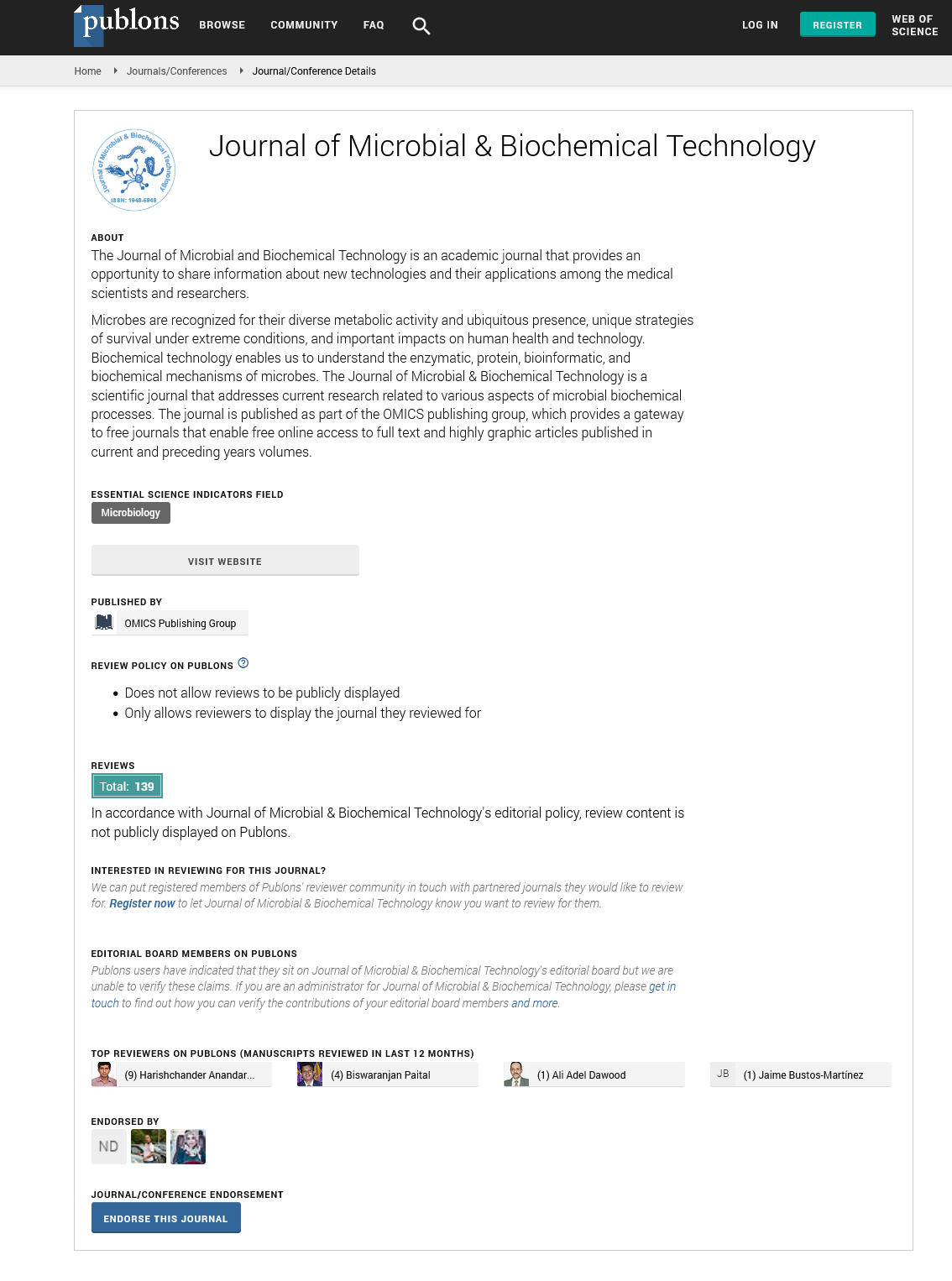PMC/PubMed Indexed Articles
Indexed In
- Academic Journals Database
- Genamics JournalSeek
- Academic Keys
- JournalTOCs
- China National Knowledge Infrastructure (CNKI)
- Scimago
- Access to Global Online Research in Agriculture (AGORA)
- Electronic Journals Library
- RefSeek
- Directory of Research Journal Indexing (DRJI)
- Hamdard University
- EBSCO A-Z
- OCLC- WorldCat
- SWB online catalog
- Virtual Library of Biology (vifabio)
- Publons
- MIAR
- University Grants Commission
- Geneva Foundation for Medical Education and Research
- Euro Pub
- Google Scholar
Useful Links
Share This Page
Journal Flyer

Open Access Journals
- Agri and Aquaculture
- Biochemistry
- Bioinformatics & Systems Biology
- Business & Management
- Chemistry
- Clinical Sciences
- Engineering
- Food & Nutrition
- General Science
- Genetics & Molecular Biology
- Immunology & Microbiology
- Medical Sciences
- Neuroscience & Psychology
- Nursing & Health Care
- Pharmaceutical Sciences
Abstract
Molecular Identification and Nickel Biosorption with the Dead Biomass of Some Metal Tolerant Fungi
Nourah Hassan Alzahrani, Khadijah Hussain Alamoudi and Mervat Morsy Abbas Ahmed El-Gendy
Nickel as a heavy metal is the fifth most abundant element on earth. It has many applications and usages. The present study was conducted to isolate metal tolerant fungal strains, molecular identification and evaluating the bioprocess efficiency by assessment the effect of some environmental conditions on biosorption capacity by the dead biomass of the selected fungi. Twelve fungal isolates obtained from polluted water of the nickel (Ni2+) were screened, fungi under the isolation number MERV21569 and AHM21696 proved to be the best biosorbents. They removed Ni2+ by 79.6% and 85.2% with uptake equal 4.33 and 4.75 μg/mL, respectively. According to the molecular identification of these selected isolates, they were designated as Aspergillus sojae MERV21569 and Aspergillus terrus AHM21696. It was found that the sorption isotherms for Ni2+ by both fungi appeared well acceptable with both Freundlich and Langmuir's models. Both isolates were investigated and evaluated with different bioprocess factors including, initial concentrations of Ni2+, different contact times and different initial pH of Ni2+ solution with different process times. Metal resistant capacity of the selected fungi against ten heavy metals including Cd2+, Pb2+, Cu2+, Hg2+, Ag+, Cr6+, Ni2+, Zn2+, Fe3+ and Al3+, which are represent the highly poisonous heavy metals in wastewaters of different industries was determined. In waters polluted with heavy metals the maximum removal of Ni2+ (100% for both strains) was achieved within 4 and 2 h contact time by using the dead biomass of Aspergillus sojae MERV21569 and Aspergillus terrus AHM21696, respectively.

